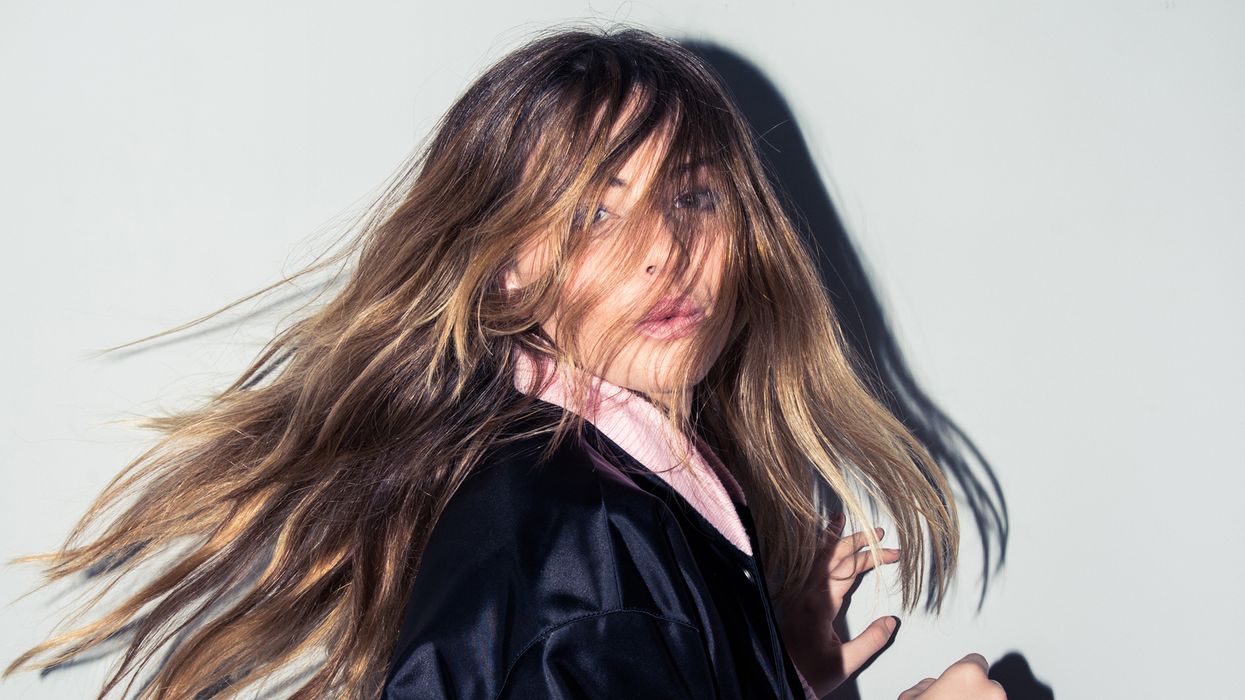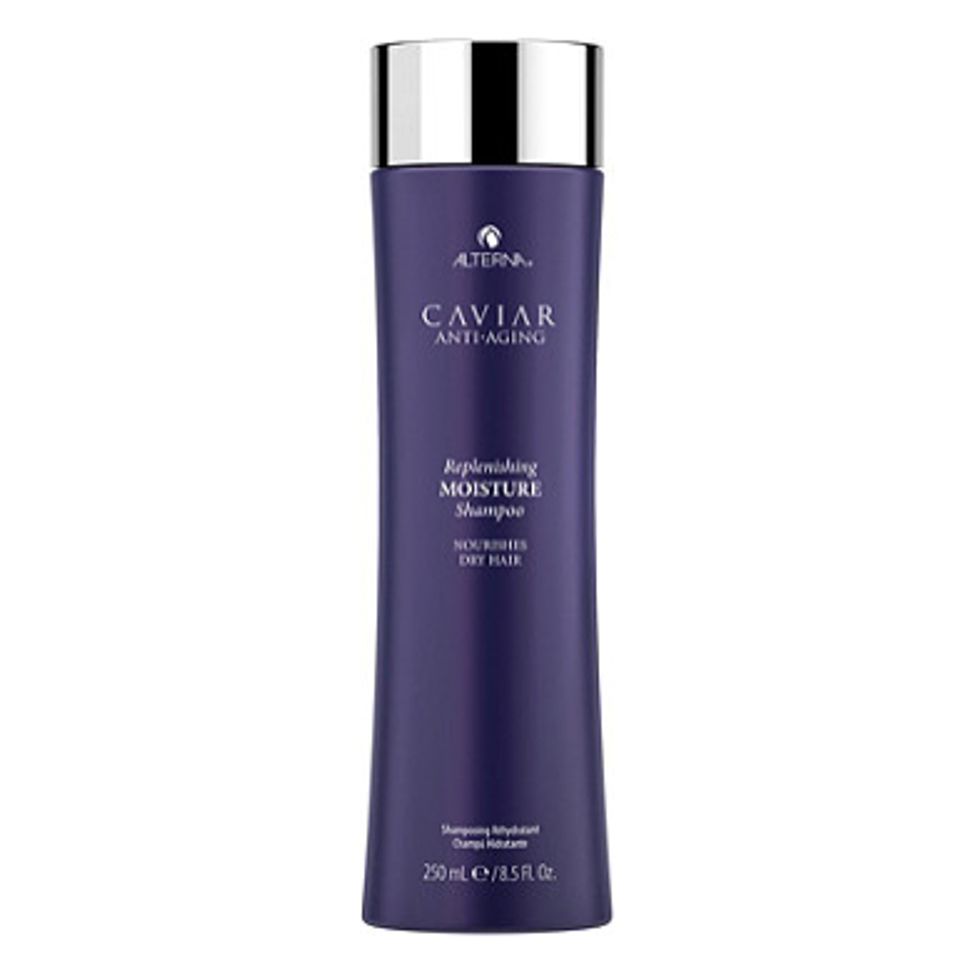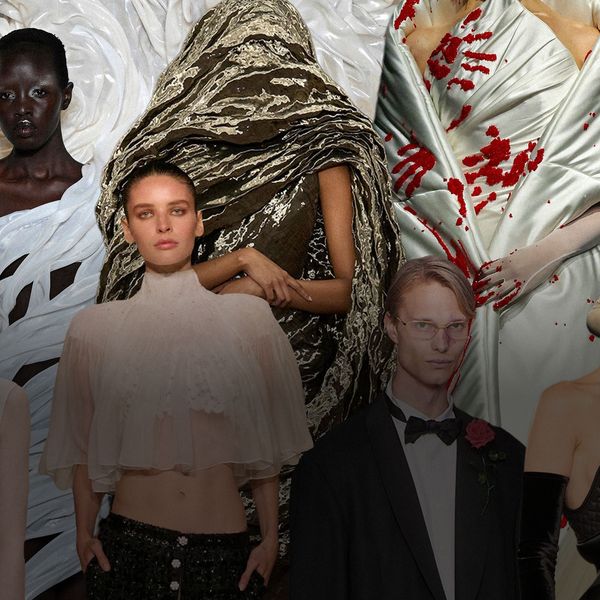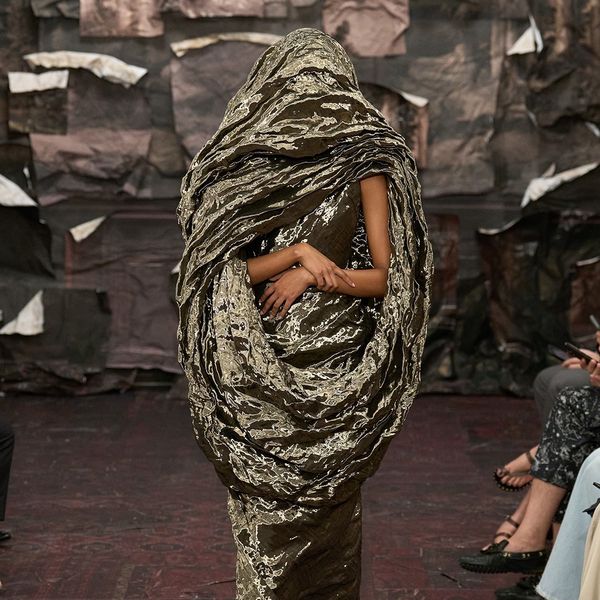Surprise—Your Hair Is Aging (and Changing) Right Along with Your Skin
Here's what you can expect to see and when.

The anti-aging skin-care industry is booming, regardless of how nebulous a term that may be, since we cannot, in fact, stop our skin from getting older. No matter how many lotions and serums you apply to your steadily aging face, you will inevitably look older than the twentysomething you once were. And that’s OK! But if the concept of not only growing older, but *looking* old gives you pause, well, you may want to start paying attention to what's happening on top of your head.
Most of us can recall the moment we saw our first grey (and if you haven’t gotten one yet, it’s coming, don’t worry), but there are numerous other changes in the physiology of your hair that happen with age. “While women can see early signs of hair aging in their 30s (grey is normally the first sign and can start well before the others), it is typically in the 40s when the signs become noticeable,” says Dr. Jeni Thomas, PhD, Hair Biology’s principal scientist. “By the late 40s and early 50s, women are seeing multiple signs which change hair’s fundamental needs.” And although changes in your hair can occur due to endocrine disorders, thyroid issues, and the environment, there are a few signs that are universal to the aging process.
So what exactly is happening in our 30s, 40s, and beyond? And more important, is there anything we can do to lessen the effects in order to keep our hair feeling and looking healthy (and perhaps more youthful)? Read on to find out.
Thinning
No matter how thick of a head of hair you were born with, your hair will gradually get thinner with age, thanks in part to its shortened life cycle. According to research from the Cleveland Clinic, when your shorter, finer hairs fall out earlier in your life, it’s usually replaced by new ones. But as women get closer to menopause in their 40s and 50s, the sex hormones that assist in stimulating those follicle fibers diminish—some follicles can even stop producing new hair altogether. “Hair amount peaks around age 35 (on average). By age 45, the relative scalp coverage is 5 percent less than the maximum, and by age 50, scalp coverage is 11 percent less than the maximum,” says Dr. Thomas. The pattern of this thinning is different for men, who will typically see the classic “male-pattern balding” on the crown of the head and along the hairline—women, on the other hand, will experience a more uniform effect all over.
In addition to fewer fibers, the diameter of your individual hairs is also fluctuating. As Dr. Thomas explains, “Individual hair diameter is progressively increasing through the early 40s, on average, before it begins to decrease around the age of 45. Diameter has an impact on hair strength (the larger the diameter, the more strength-giving protein it has), flexibility (smaller diameter tends to be more flexible and less rigid), and how full hair appears.” That increase in diameter can mask the fact that you have fewer active follicles and less fibers, allowing your hair to still appear as full as it did earlier in your life well into your 30s and early 40s. It also explains why your overall hair texture may differ slightly in your teens, 20s, 30s, and so on.
Texture
As your fiber diameter changes—growing larger until you’re roughly 45 and then decreasing—so too does the curvature of your hair. Curly and wavy-haired women already know that their texture is never uniform in every section of their head, and we’re sorry to say that that inconsistency will only increase with age. “The curvature of hair tends to lose its uniformity as we age. That also leads to the appearance of increased frizz and flyaways. Even for curly hair, which has an elliptical shape to begin with, the fibers lose their conformity to the fibers around them, resulting in a curl pattern that is less consistent than in earlier years,” says Dr. Thomas.
Dryness
Your teenage years may have been marked by excessive oil production, in your hair as well as your complexion, but the hormonal changes you’ll experience in your 40s and beyond will also lead to changes in your scalp’s sebaceous glands. “Hair follicles [will] produce less oil for our scalp and hair,” reveals Dr. Thomas. “With slower sebum production, hair is more likely to feel dry, and it can seem even more flyaway without the natural oils to keep it smooth. [Although] we do find that women in their later 40s and 50s tend to wash less often than before because hair doesn’t feel dirty or greasy as quickly as it once did.” Using products that impart enough moisture for your hair and scalp are essential once you reach this point in your life—more on that later.
Greying
Yes, the ubiquitous grey hair debacle. Some face their silver hairs with a steady stream of colorist appointments, while others embrace their arrival more or less without a fight. But aside from the universal passage of time, there are a few other genetic factors that contribute to how and when you’ll go grey. “The average age of Caucasians when greying begins is reportedly mid-30s. People of Asian descent tend to grey a little later, late 30s, and people of African descent even later—mid-40s [on average],” says Dr. Thomas. But why does our body eventually produce white and grey hairs at all?
She explains that our bodies’ systems slow down with age and cannot function in the same way as they did in our youth, which can affect the melanocyte cells that give your hair its color (also known as melanogenesis). “It takes a lot of energy to produce hair and even more to produce pigmented hair fibers. Our bodies prioritize other systems over this as energy becomes more limited.” So in other words, your hair color has to be sacrificed in order to keep your aging body functioning properly.
You can also look to your parents for help in determining when you’ll begin the greying process (as well as how thick your hair will look later in life). As Dr. Thomas explains, “Once a hair falls out and the follicle restarts the growth phase, it receives a signal from your DNA to skip the melanin saturation and start fresh as a grey, or non-pigmented, hair fiber. Over time, more and more hair strands receive their ‘grow grey’ signal, and eventually, you’ve got yourself a head of grey hair.” The genetically controlled process can therefore be affected by both your parents and overall family tree—so feel free to blame them if you see premature greying (meaning in your 20s or younger).
Lifestyle Changes
So we have thinning, greying, texture changes, and dryness—all of which are more or less unavoidable—but Dr. Thomas did note that lifestyle factors can affect the age at which you’ll experience these biological signs of aging. “Stress, diet, and general health are believed to impact the age of onset—especially for thinning-related hair changes. The jury is still out on whether stress accelerates greying. It is a good idea to do what you can to stay healthy and eat a balanced diet to ensure your body can dedicate the energy required to reach your genetically defined hair potential.” Essentially, the same healthy choices that you make to ensure your skin and body feel and look the best they can will apply to your hair, so if you haven’t started your balanced diet, exercise regimen, and de-stressing acupuncture or meditation practice (among others), it might be time to try.
Products & Ingredients to Look For
Just as the most beneficial ingredients for your skin change with age (retinol, anyone?), the types of products and treatments you should be using in your 40s and beyond will also look different. Dr. Thomas recommends staying away from anything particularly heavy, like an oil or thick balm, as these can weigh down thinner hair. Lightweight and fast-absorbing serums will help you impart more moisture as your sebum levels drop, minus the unwanted weight. She also advises avoiding texturizing products (like those that contain salt) and dry shampoos, as they can leave your hair feeling rougher and dryer. However, if you can’t bear to part with your favorite styling product, just scale back on the amount or use them less frequently.
If you’re looking for new products to incorporate into your routine, there are a few key ingredients to embrace to prolong your hair health. Dr. Thomas recommends, “Ingredients like restoring lipids, cetyl alcohol and stearyl alcohol, and the antioxidant that supports hair’s keratin structure, histidine.”
For the proud silver foxes among us, purple shampoos and conditioners are your new best friend, but the appropriate products are not necessarily the same as those used for blond or platinum hair. Dr. Thomas says that the formula should be tailored specifically for grey hair, like the Hair Biology Silver & Glowing Silver Shampoo with Biotin, which helps fight dullness and yellow tones. As much as it may pain you to throw out the beloved products from your youth, using new formulas that are designed for older hair and its needs will help you maintain a healthy head of hair for years to come.
And remember, just because your hair doesn’t look the way it did when you were 25 doesn’t mean it’s not gorgeous. There’s a beauty to embracing your age, and you don’t need the beauty industry (or anyone else, for that matter) to convince you otherwise.







